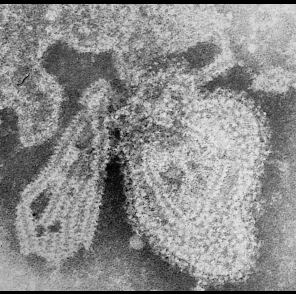Parotitis
For patient information click here
| Parotitis | |
 | |
|---|---|
| Mumps virus |
|
Parotitis Microchapters |
|
Diagnosis |
|---|
|
Treatment |
|
Case Studies |
|
Parotitis On the Web |
|
American Roentgen Ray Society Images of Parotitis |
Editor-In-Chief: C. Michael Gibson, M.S., M.D. [1]
Overview
Epidemiology & Demographics
Pathophysiology
Diagnosis
History & Symptoms
Treatment
Medical Therapy
The treatment of viral parotitis is largely supportive. Bacterial parotitis is targeted toward gram positive and anaerobic organisms. 70% of those cultured are beta-lactamase producers so Augmentin is recommended. Antistaphylococcal penicillins are also advocated. Some suggest the addition of metronidazole or clindamycin. Systemic symptoms or failure to improve in 48 hrs warrants IV therapy and consideration of additional coverage for GNR. Adjunctive therapy with warm compresses, mouth irrigation, administration of sialagogues (lemon drops) and bimanual massage of the gland intraorrally and externally can be employed.
Surgery is referred for recalcitrant infections, abscess drainage and to obtain tissue if a noninfectious cause is suspected.